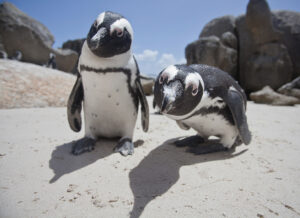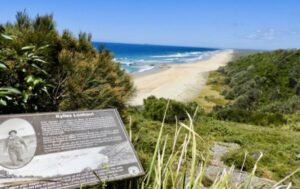A passion for the natural world drives many of our adventures. And when we’re not outside, we love delving into discoveries about the places we live and travel. Here are some of the best natural history links we’ve found this week.
The most explosive moon in the solar system: Io is the third-largest moon orbiting Jupiter. Gravity pushes and pulls the minerals in the moon’s core, causing friction and heat deep. This means that the moon has a huge amount of volcanic activity. It has hundreds of volcanoes and networks of lava flows. But there has always been mystery around the different types of eruptions.
Eruptions at the end of 2022 emitted less sulfur dioxide than expected, and the cloud of gas was not as bright. This suggests that the eruption had a different chemical composition from others. Another possibility is that gravity had disturbed different minerals. Researchers hope the new data will help them to identify the different kinds of volcanoes on Io.
Deep-sea giants
Gigantism is in whale’s genes: Whales make up the eight largest animals on earth, and blue whales are the largest creature to have ever existed (that we know of). But whales were not always this large. How and why did they become so big?
Until five million years ago, most whale species were less than 10 meters long. One exception was the Basilosaurus, the largest-known early whale. The Basilosaurus was an apex predator 40 million years ago.
It turns out that four genes are responsible for whales’ gigantic size and for mitigating the disadvantages that come alongside it. The genes help program the release of growth hormones, cell growth and division, weight gain, and embryo growth.

A breaching humpback whale. Photo: Shutterstock
Asteroid measurements make no sense: Every month, several asteroids and objects pass close to Earth. To describe these, journalists are coming up with ever more bizarre measurement comparisons.
In recent articles, these space rocks have been described as “the size of 22 emperor penguins stacked nose to toes,” “the size of 100 adult pugs,” and “half the size of a giraffe.”
There is no formal guideline for describing the size of asteroids. “It’s a real challenge to try and communicate physical properties of something that people aren’t going to actually lay eyes on,” astronomer Eric Christensen admitted.
The cute comparisons are attention-grabbing and spark interest. The glaringly obvious issue is that, as cute as the image might be, most people can’t picture 22 penguins head to toe.
Practical art
Ice Age cave art used to keep records: Archaeologists think that cave art across Europe might have been used to keep track of time.
In hundreds of European caves, archaeologists found the same markings, comprised of dots, lines, and the symbol “Y”. But what do these markings mean? Some believe they were to track the mating and birthing schedule of local fauna. The dots and lines closely correlate to mating months and the Y symbols predict births.
If the theory is correct, it is one of the earliest records of a coherent notional system. “This is a big deal cognitively. We’re dealing with a system that has intense organization, intense logic to it,” researcher Ben Beacon said.
Another suggestion is that they track the 13 lunar cycles of the year, starting with the first snow melt. This means that the calendar could help those early people to track animals. For example, bison always mate four lunar cycles after the snow melt.

The four dots on the animal’s torso likely indicate that it mates in the fourth month after the spring snow melt. Photo: Wikimedia Commons
Threatened sharks on the menu
Shark meat served as fish and chips: Multiple fish-and-chip shops across Australia are using meat from threatened shark species. The meat from these species occurred in 23% of samples from 100 establishments.
“Although endangered shark species have been served to consumers globally, it was a surprise to find out that Australians are unknowingly eating iconic species, such as the endangered hammerhead,” said biologist Ashleigh Sharrad.
Apart from the ethics of such food sourcing, researchers worry about the high levels of toxins that build up in species high up the food chain. Ingested, they can be dangerous for humans.
Global warming reaches central Greenland: Ice cores of the past 1,000 years show that climate warming in Greenland is more extreme than anticipated. The most recent study shows that ice from 2001 to 2011 is the warmest in over 1,000 years. It was 1.5°C warmer than it was in the 20th century.
By using the longest ice cores ever collected, researchers have reconstructed the melting rates of ice sheets in north-central Greenland.
“This data shows that the warming from 2001 to 2011 clearly differs from natural variations during the past 1,000 years,” glaciologist Maria Horhold said.






